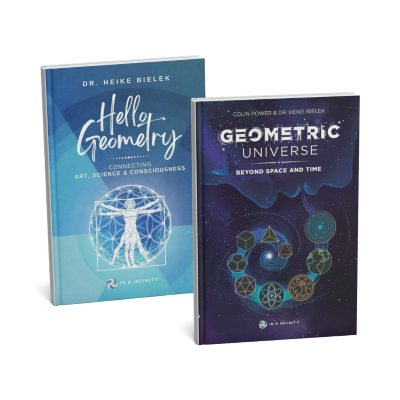Geometry, as a branch of mathematics, offers more than just numerical calculations. Its inherent pattern and measurement aspects enable us to perceive the world in a structured and interconnected way. Through the study of geometry, we discover a profound link between mathematical concepts and various scientific and spiritual notions, making learning an immersive and enjoyable experience.
Overview
Within the intricate realm of quantum mechanics lies the fascinating field of geo quantum mechanics, a branch of study that explores the geometric structure of atomic nuclei. The nucleus, composed of protons and neutrons, serves as the epicentre of an atom, with each element on the periodic table showcasing its own unique arrangement.
On this page, we provide an overview geoquantum mechanics, unravelling the significance of nucleonic composition and shedding light on the perplexing nature of atoms.
Expanding Consciousness Through Visualization
Using geometry as a tool for organizing our thoughts, geometric thinking provides an effective means to expand consciousness and enhance cognitive abilities. Our innate visual nature enables us to understand and retain complex ideas more readily when they are associated with visual representations. Just as memory champions utilize visual techniques for exceptional recall, geometric thinking taps into our natural inclination towards visualization.
One example of a well established memory technique goes back to antiquity. The Roman Room, or Memory Palace, employs the construct of a virtual space within the mind. By assigning a place in the room for different object, memory can be enhanced significantly. Alternative theme include using a journey that you make on a regular basis, and leaving objects along the way. This demonstrates that when through are compiled in a geospatial concept, the mind works much more effectively at recalling the information.
Forms of Geometric Thinking
There are many different forms of geometric thinking that are used by a wide range of disciplines. From simple models to the use of symbolism to connect with the subconscious mind. Here are a few clear examples.
Science: The Role of Models
The scientific community often employs geometric models to explain intricate concepts and phenomena. These models allow scientists to represent complex structures, processes, and relationships, aiding in the visualization and comprehension of scientific ideas.
Business: Infographics and Mind Mapping
In the business world, infographics and mind mapping enable the effective communication of information. Visualizing data and concepts through these geometric tools allows for better understanding, decision-making, and communication within organizations.
Religion: The Power of Symbolism
Religious traditions frequently employ geometric symbols to represent profound concepts and beliefs. Whether it be the sacred geometry found in Hindu mandalas or the geometric patterns in Islamic art, symbolism helps convey spiritual messages while adding visual beauty.

Books out now
Hello Geometry & Geometric UNiverse
Filled with intricate illustrations, our books offer a concise exploration of the Multidimensional Universe, challenging our understanding of space, time, and existence.
Empowering Minds with Geometric Thinking
Through compass construction and the development of various tools and techniques, we can unlock the potential of geometric thinking to enhance mental capacities. By embracing geometric thinking, individuals, communities, businesses, and educational institutions can:
Envision Outside the Box:
Geometric thinking encourages creative problem-solving and the exploration of alternative perspectives. It liberates minds from conventional frameworks, allowing for innovative solutions and the discovery of untapped possibilities.
Foster Personal Development and Planning:
Applying geometric thinking to self-development enables individuals to set goals, create structured plans, and visualize the steps needed to achieve their objectives. It provides a framework for personal growth and the organization of thoughts and actions.
Understand Complex Subjects:
Geometry’s ability to simplify and visualize complex ideas makes it a valuable tool for tackling challenging subjects. By breaking down intricate concepts into more manageable geometric components, learning becomes accessible, engaging, and meaningful.
THE
Conclusion
Geometric thinking offers a fascinating lens through which we can explore the interconnectedness of knowledge across various disciplines. Its visual nature taps into our innate ability to grasp and retain complex ideas. By embracing geometric thinking, we empower ourselves to think beyond boundaries, foster personal growth, and comprehend intricate concepts with greater ease. Let us embark on this geometric journey and uncover the endless possibilities it holds for fun, interactive, and transformative learning experiences.
Carry on Learning
Discover more about the GEOMETRIC UNIVERSE by reading these key posts


Ground-Breaking New Theory
New Mathematical and Scientific theory based on the tenants of geometry: Dimensionless Science, Atomic Geometry, 4D thinking…

4D Thinking
Welcome to a contemplative journey into the realm of 4D thinking, where we explore the expansiveness of human consciousness. This blog post introduces the torus, a fundamental shape in the fourth dimension, and delves into the intricate relationship between space, time, and shape. From science to spirituality, we’ll navigate the

Geo-Relativity
In the realm of physics, one of the most groundbreaking theories that revolutionized our understanding of the universe is Albert Einstein’s theory of Special Relativity. At its core, this theory unifies time and space for different observers, paving the way for a deeper comprehension of the fundamental principles that govern


